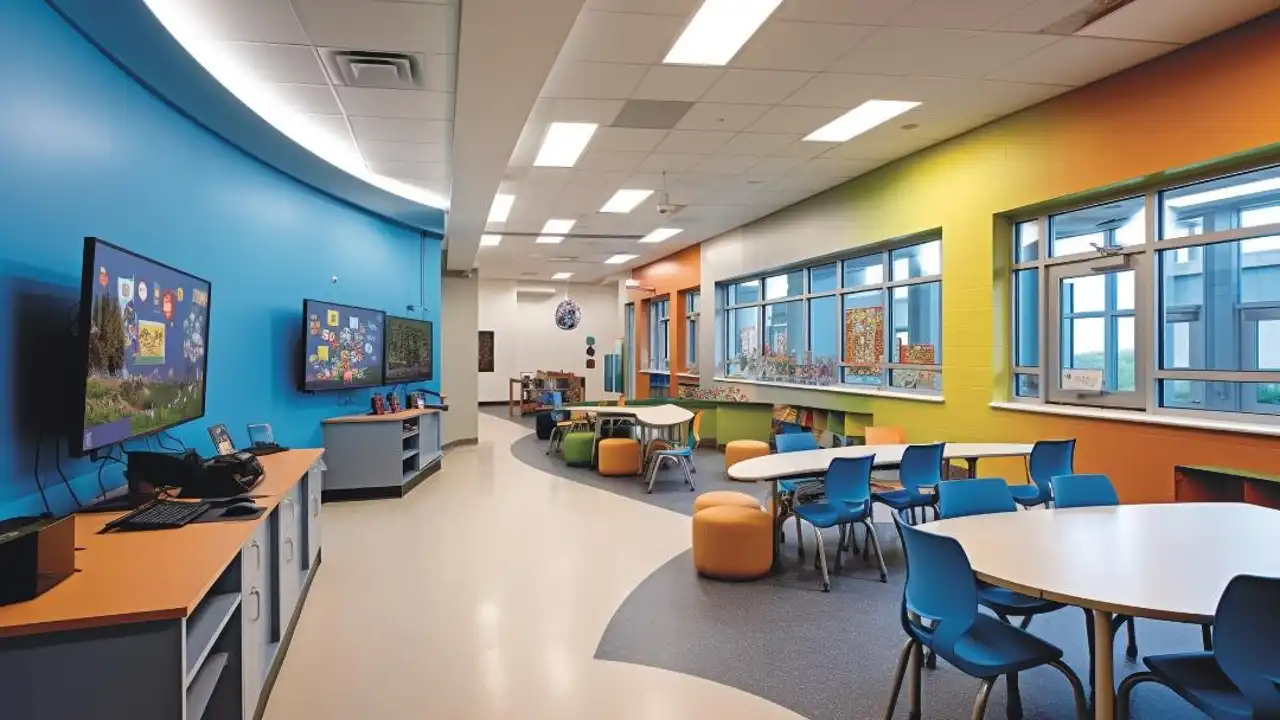Education
How To Maximize Your Classroom Space For Better Learning

The learning environment, like the classroom, plays a vital role in shaping a student’s success. And as a teacher, ensuring that your classroom is ready for better learning is important.
By preparing the classroom, you’ll contribute to a conducive learning environment. You’ll be able to create an environment that fosters engagement, interaction, and productivity, which ultimately leads to better outcomes. It can also help you accommodate diverse learning styles and create a more comfortable and welcoming atmosphere.
And the beauty of maximizing your classroom is it’s possible regardless of the space, resources, or specific teaching needs. But how do you maximize your classroom space for better learning? To make it easier, below are some tips that can help you optimize your space and enhance the learning experience for your students. Dive in below.
- Keep The Classroom Organized
When looking to maximize your classroom space, keeping it organized is crucial. The first step to keep it organized is using storage solutions like shelves, cabinets, and bins. These storage solutions should fit the level of schooling that your students are in.
For instance, if it’s a secondary school, it’s important to get secondary school equipment that fits your classroom’s needs. And for extra organization, consider labeling storage solutions to make it easier for students to find things.
Another way to remain organized is to keep what you need and eliminate clutter. Remember to assign designated spaces for different activities and supplies. This helps you create a sense of order and structure in your classroom.
- Use Vertical Space
Vertical spaces can help you create more space for learning activities. Therefore, you should consider maximizing your classroom’s available vertical space using different tricks. One way to do this is by installing wall-mounted shelves, cabinets, and pockets to store your materials. This helps you free up valuable floor space and maintain organization.
If you have a whiteboard or chalkboard, consider hanging them on the walls to create more space. Any extra space on the wall could work as a display for student work, which helps you showcase their achievements while creating more visual interest. You can take an extra step and create a gallery of student work.
Vertical space means considering hanging storage too. You can store materials and supplies by hanging baskets, hooks, and file folders. This tip can be useful in small classrooms where floor space is limited.
- Arrange Furniture Strategically
Maximizing your classroom space will be easier if you arrange your furniture effectively. Nonetheless, the strategic placement of furniture can be overwhelming. To make the process much easier, start with a floor plan that accounts for the shape and size of your classroom.
With a floor plan, organize the desks and tables by trying different seating arrangements like clusters, pairs, or rows. This seating arrangement should be able to suit different learning activities. It’ll be easier if you use furniture that serves multiple purposes, as it helps to save space and create a more versatile learning environment.
Keep traffic flow in mind. To make it easier, ensure enough space for students to move around easily and without disruption. And remember to create zones for different activities like reading, writing, and group work. Such furniture pieces can help create a visual boundary that helps boost focus and stay on task.
- Incorporate Technology
You should consider incorporating technology for a more engaging and interactive learning environment. One way to do this is by using digital textbooks, which eliminate the need for physical books that occupy plenty of valuable space.
An interactive whiteboard is another technological option to display information, videos, and other resources. The display eases the ability of students to see and engage with the content and frees up space that’d otherwise be used for storing these resources.
Another way to free up physical space using technology is using collaboration tools. These tools help students to work together on projects which frees up physical space.
- Create Flexible Learning Spaces
Creating different learning areas within the classroom is a great way of maximizing your space, thus creating a more versatile and adaptable learning environment. You can adapt your classroom to different activities and learning tasks by creating flexible spaces.
These adaptations maximize your classroom space and create a more efficient learning environment. Further, creating a flexible learning space helps to future-proof your classroom. This can easily be reconfigured and updated, allowing the space to change with space needs.
Bottom Line
In conclusion, maximizing your classroom space is vital in ensuring an effective and engaging learning environment. Considering the tips mentioned above, you can make the most of your classroom space while promoting student engagement, collaboration, and creativity. Remember that incorporating these strategies into your classroom design can create a space that promotes optimal learning outcomes for all your students.
Kenneth is a proud native of sydney, born and raised there. However, he pursued his education abroad and studied in Australia. Kenneth has worked as a journalist for almost a decade, making valuable contributions to prominent publications such as Yahoo News and The Verge. Currently, he serves as a journalist for The Hear Up, where he focuses on covering climate and science news. You can reach Kenneth at [email protected].










